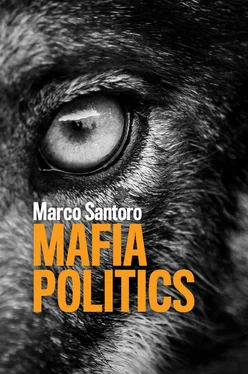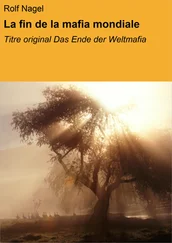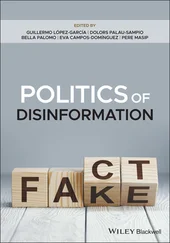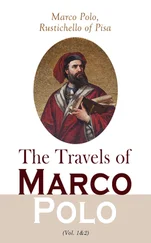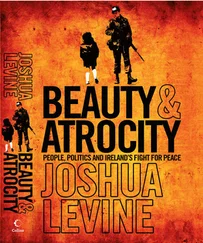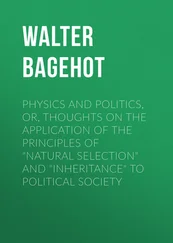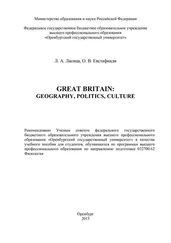The multilayered political and social history of Sicily, from the Middle Ages to national unification under the Kingdom of Italy (1861) and beyond, accounts for the institutional synthesis that the name ‘mafia’ has the power to evoke. It is a claim of this book that understanding the Sicilian mafia means accounting for its social and institutional genesis in this complex and long-lasting web of influences and interests impinging upon Sicily since the Middle Ages (see Greif 2006 for a discussion about the lasting influence of medieval institutions). The rise of the mafia is just another aspect of the history of the conflict between the state and other political forms – such as city-states, empires, city-empires, as well as more primordial but effective organizations such as clans, families, warrior-leagues and so on – and it is within this history that it has to be embedded. Some elements suggest that the mafia’s institutional history may also be embedded in the history of political ideas, including utopian (e.g., socialist and, especially, anarchist) ones. In this respect, even though they are probably exceptional, the stories of Vito Cascio Ferro and Bernardino Verro – respectively, an influential godfather who was a leading local socialist and anarchist in his youth, and a renowned Sicilian trade unionist who was a mafioso in his youth – are enlightening. As a minor point of the book, I emphasize the anarchist moment as the plea for an understanding of the mafia’s structure and functions independently from any concession to the state as a political ideal and an institutional model; as I will never be tired of repeating, I want to analyse and assess ‘the mafia’ from a radically nonstate-centric and, possibly, non-Westernized point of view. This emphasis on anarchism is not only a theoretical move but a return to what I see as one major historical spur to the development of mafias all over the world, including Italy. Contrary to an entrenched belief – including Francis Marion Crawford’s claim, which I will cite in the next section – anarchism and the mafia, at least in Sicily and the US, ran parallel for a while. The book also capitalizes on this historical connection to derive a few theoretical implications.
However, the Mediterranean region is a cultural formation on its own (Cassano 2001; Piterberg et al. 2010), and in this historical and geographical juncture we have to locate the historical experience that gave ‘mafia’ its name, i.e. the Sicilian mafia. This was actually the great insight of Fernand Braudel’s 1949 study, The Mediterranean World : the idea that it was possible to have a society maintaining itself through the active exchange of goods, people and ideas without a unified ‘administrated territory’ as we know it in our statist times. This book further develops the idea that Sicily – i.e. the place where something like ‘a mafia’ was first identified in the 1860s and from which every analysis of the mafia as a social type should start – is located in this Mediterranean world between Europe (i.e. a dominant region of the global North) and Africa, or better, the African shores of the Mediterranean Sea (i.e. an important piece of the global South). It occupies an interstitial location between Europe/civilization and Africa/barbarism (see, e.g., Niceforo 1899). It is worth recalling that, just after political unification, many functionaries and soldiers coming from the northern Italian regions labelled Sicily as ‘Africa’ (see Schneider 1998; Moe 2002). Indeed, there are also documented connections between mafiosi and Africa at least since the end of the nineteenth century – and in some periods, there was a mafia family based in Tunis. But the relation between the mafia and Muslim Africa goes deeper than this, and has to do with the common roots in the medieval Arab and Muslim domination that produced the word ‘mafia’ itself – a local popular derivation from Arab terms meaning, not by chance, ‘protection, shelter’ (see Patella 2002; see also pp. 5– 7).
This ‘zone of contact’ has a culture of its own. Honour is a well-known element of this Mediterranean cultural world (Peristiany 1965; Herzfeld 1987; Peristiany and Pitt-Rivers 1992; Blok 2001; Giordano 2012), on which even Pierre Bourdieu (1977) focused attention in his early experiences as an ethnologist working in Algeria among the Berbers (it must be recalled that the Berbers were among Sicily’s rulers in the Middle Ages). Other common features can be listed as well – for instance, a certain conception of justice and of personal loyalties (e.g., Rosen 2002; Cornell 2005). Indeed, we should remember that Sicily was also heavily influenced by Greek culture, as its eastern shores were colonized by the Greeks in the eighth century bc. As shown by van Wees (2001), archaic ancient Greek society and politics had many similarities with the contemporary mafia’s culture of violent competition. However, it is a matter of fact that although the Greek influence was strong in the eastern provinces of Sicily, that was not the case in the western provinces, where the mafia developed. In the western provinces of the island, it is the Arabs who left a legacy. Rather than conceiving them just as mere evidence of deeply rooted traditions, I suggest that the similarities between the Sicilian mafia and ancient Greek politics have to do with what, in the last chapter of the book, will be called the ‘elementary forms of political life’ (see also Posner 1979).
What the Arab, Greek and African elements remind us is that Sicily, and the Sicilian mafia as well, developed in an area where the globalizing world about which we so intensively talk today was already somehow in place (Abu-Lughod 1989). Sicily existed midway between North and South, influenced by European history but geographically, and even ethnologically, closer to the Mediterranean world, to that southern part of Europe which borders on the northern part of Africa. Using concepts elaborated in northern Europe, at the historical core of the global North, or in the US to understand other parts of the world is an example of what a few years ago Susanne Rudolph (2005) termed ‘the imperialism of categories’ (see also Rudolph and Rudolph 2010). This is also what sociological research on the mafia has typically done, exporting concepts and methods typically rooted in Anglo-American Lockean universal liberalism (sometimes in German neo-Kantian ethical universalism) and applying them to make sense of the mafia’s patterns of social life, that is, a totally different historical, geographical and cultural experience. This alternative, southern location and identification is what this book wants to privilege, grounding our understanding of the Sicilian mafia in situated, local knowledge, and connecting the sociological understanding of the mafia to alternative conceptual repertoires, on the one hand, and to contemporary pleas for the rethinking of the social sciences as a world scale affair, on the other (e.g., Chakrabarty 2000; Alatas 2006a; Connell 2007; Patel 2010; Comaroff and Comaroff 2012, 2016). This is the object of the Chapters 4– 6of this book, which offers what I would label a political anatomy of the (Sicilian) mafia .
To limit the history of mafia – even of the Sicilian mafia – to the adventures of a single country would in any case mean to surreptitiously accept what has been called methodological nationalism – the methodological assumption that ‘a particular nation would provide the constant unit of observation through all historical transformations, the “thing” whose change history was supposed to describe’ (Wimmer and Glick Schiller 2002, 305). Problematic in all cases, this assumption is especially troubling in the study of mafias. Wherever and whenever they developed – in the first half of the nineteenth century in southern Italy, at the beginning of the twentieth century in the eastern US, in the eighteenth century in Japan and China, after the collapse of communism in Russia – mafias are indeed part and parcel of a series of overlapping transnational, sociospatial networks of power which embrace large and largely unpredictable areas of the world (Mann 1986a, 1986b; Castells 2000; Collins 2011).
Читать дальше
